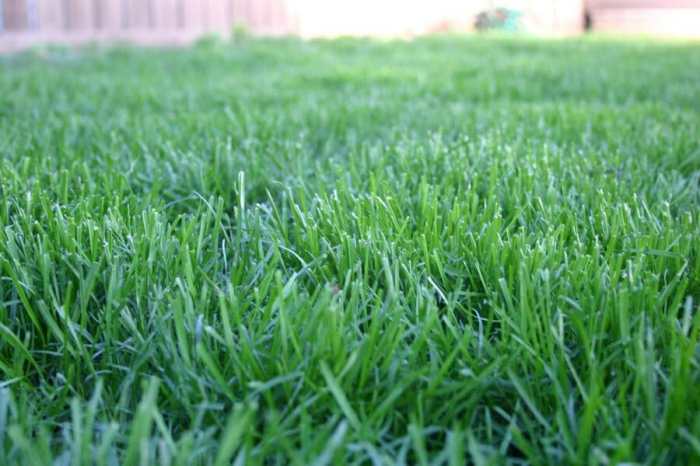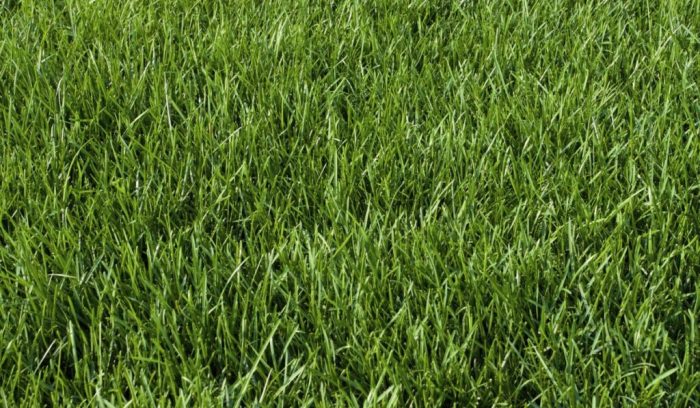Kentucky bluegrass is more drought resistance than buffalograss – In the face of increasing water scarcity, the drought resistance of turfgrasses has become a critical factor in landscape design. Kentucky bluegrass and buffalograss, two popular lawn grasses, offer distinct levels of drought tolerance. This article delves into the comparative drought resistance of these grasses, exploring their water requirements, heat tolerance, soil preferences, and management practices that enhance their ability to withstand water stress.
Kentucky bluegrass, known for its lush, cool-season growth, exhibits superior drought resistance compared to buffalograss. Its deep root system enables it to access moisture from deeper soil layers, while its waxy leaf blades minimize water loss through transpiration. In contrast, buffalograss, a warm-season grass, has a shallower root system and less efficient water-saving mechanisms, making it more susceptible to drought stress.
Drought Resistance Comparison
Kentucky bluegrass and buffalograss are two popular lawn grasses known for their durability and drought resistance. Kentucky bluegrass is a cool-season grass that thrives in temperate climates, while buffalograss is a warm-season grass that is well-suited to hot, dry regions.
When it comes to drought resistance, buffalograss generally has an advantage over Kentucky bluegrass. Buffalograss has a deep root system that allows it to access water from deeper in the soil, even during periods of drought. Kentucky bluegrass, on the other hand, has a shallower root system and is more susceptible to drought stress.
Drought Resistance Comparison Table
| Grass Type | Drought Resistance Level |
|---|---|
| Kentucky bluegrass | Moderate |
| Buffalograss | High |
Water Conservation: Kentucky Bluegrass Is More Drought Resistance Than Buffalograss

Kentucky bluegrass and buffalograss have different water requirements. Kentucky bluegrass is a thirsty grass that requires regular watering, especially during hot, dry weather. Buffalograss, on the other hand, is a more water-efficient grass that can tolerate longer periods of drought.
The amount of water each grass needs will vary depending on factors such as climate, soil conditions, and sun exposure. However, as a general rule of thumb, Kentucky bluegrass requires about 1 inch of water per week, while buffalograss requires about 1/2 inch of water per week.
Water Conservation Table, Kentucky bluegrass is more drought resistance than buffalograss
| Grass Type | Water Requirements (per week) |
|---|---|
| Kentucky bluegrass | 1 inch |
| Buffalograss | 1/2 inch |
Heat Tolerance

Heat tolerance is another important factor to consider when choosing a lawn grass. Kentucky bluegrass is a cool-season grass that prefers cooler temperatures. In hot climates, Kentucky bluegrass can go dormant during the summer months. Buffalograss, on the other hand, is a warm-season grass that thrives in hot, dry climates.
The heat tolerance of Kentucky bluegrass and buffalograss can affect their drought resistance. In hot climates, Kentucky bluegrass is more likely to experience drought stress than buffalograss. This is because Kentucky bluegrass is more susceptible to heat damage, which can weaken the plant and make it more vulnerable to drought.
Examples of Heat Tolerance
- Kentucky bluegrass performs well in climates with cool summers and mild winters.
- Buffalograss is well-suited to hot, dry climates and can tolerate temperatures up to 110 degrees Fahrenheit.
Soil Conditions
Kentucky bluegrass and buffalograss prefer different soil conditions. Kentucky bluegrass grows best in well-drained, fertile soil with a pH between 6.0 and 7.0. Buffalograss, on the other hand, is more tolerant of poor soil conditions and can tolerate a wider range of pH levels.
The soil conditions can impact the drought resistance of Kentucky bluegrass and buffalograss. In poor soil conditions, Kentucky bluegrass is more likely to experience drought stress than buffalograss. This is because Kentucky bluegrass is more susceptible to nutrient deficiencies and other soil-related problems.
Soil Conditions Table
| Grass Type | Preferred Soil Conditions | Impact on Drought Resistance |
|---|---|---|
| Kentucky bluegrass | Well-drained, fertile soil with a pH between 6.0 and 7.0 | More likely to experience drought stress in poor soil conditions |
| Buffalograss | Tolerant of poor soil conditions and a wide range of pH levels | Less likely to experience drought stress in poor soil conditions |
Management Practices

Management practices, such as mowing and fertilization, can affect the drought resistance of Kentucky bluegrass and buffalograss. Proper mowing and fertilization can help to keep the grass healthy and vigorous, which can make it more resistant to drought stress.
For Kentucky bluegrass, it is important to mow the grass at a height of 2.5 to 3 inches. Mowing the grass too short can weaken the plant and make it more susceptible to drought stress. Kentucky bluegrass should also be fertilized regularly with a balanced fertilizer.
For buffalograss, it is important to mow the grass at a height of 3 to 4 inches. Buffalograss should also be fertilized regularly with a fertilizer that is high in nitrogen.
Recommended Management Practices
- Kentucky bluegrass:Mow at a height of 2.5 to 3 inches and fertilize regularly with a balanced fertilizer.
- Buffalograss:Mow at a height of 3 to 4 inches and fertilize regularly with a fertilizer that is high in nitrogen.
Essential FAQs
Is Kentucky bluegrass completely drought-proof?
While Kentucky bluegrass is more drought-resistant than buffalograss, it is not completely drought-proof. Extended periods of extreme drought can still cause stress and damage to Kentucky bluegrass lawns.
What are the best management practices to enhance the drought resistance of Kentucky bluegrass?
Regular mowing at a higher blade height, infrequent deep watering, and avoiding over-fertilization are recommended practices to promote deep root growth and reduce water loss in Kentucky bluegrass.
Can buffalograss survive in areas with high drought risk?
Buffalograss is generally not recommended for areas with severe drought conditions. However, selecting drought-tolerant varieties, such as ‘609’ or ‘Presidio,’ and implementing strict water conservation measures can improve its survival chances.